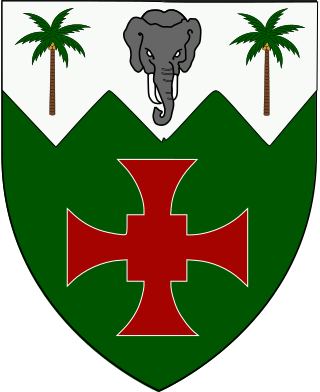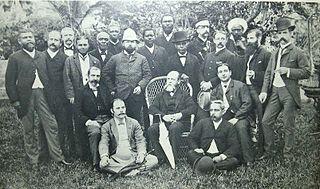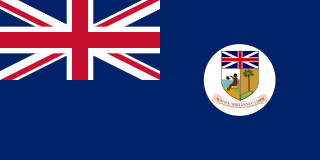Related Research Articles

Surgeon-Major James Africanus Beale Horton was a British Army officer, surgeon, writer and banker. Born in Gloucester, Sierra Leone into a Creole family who were liberated from enslavement by the Royal Navy, he began attending the SLGS in 1845. After graduating from Fourah Bay College, Horton received a War Office scholarship study medicine in Britain to prepare him for a career in the British Armed Forces, and he attended King's College London and the University of Edinburgh. Serving in the West India Regiments, Horton was posted to various locations within the British Empire, including Lagos, the Gambia, Sierra Leone and the Gold Coast and participated in the Anglo-Ashanti wars.

Isaac Theophilus Akunna Wallace-Johnson was a Sierra Leonean, British West African workers' leader, journalist, activist and politician.

Fourah Bay College is a public university in the neighbourhood of Mount Aureol in Freetown, Sierra Leone. Founded on 18 February 1827, it is the first western-style university built in Sub-Saharan Africa and, furthermore, the first university-level institution in Africa. It is a constituent college of the University of Sierra Leone (USL) and was formerly affiliated with Durham University (1876–1967).
The International African Service Bureau (IASB) was a pan-African organisation founded in London in 1937 by West Indians George Padmore, C. L. R. James, Amy Ashwood Garvey, T. Ras Makonnen and Kenyan nationalist Jomo Kenyatta and Sierra Leonean labour activist and agitator I. T. A. Wallace-Johnson. Chris Braithwaite, was Secretary of this organisation.
The history of African-American settlement in Africa extends to the beginnings of ex-slave repatriation to Africa from European colonies in the Americas.
William Smith (1816–1895) was a Gold Coast-Sierra Leonean civil servant who worked in Freetown, Sierra Leone, as a registrar for the Mixed Commissionary Court. Due to his position and through his marriage to wealthy Freetown Creoles, Smith became a prominent figure in Sierra Leone. Smith had 14 children. Dr. Robert Smith, Francis Smith, and Adelaide Casely-Hayford are the most well known of them.

Constance Cummings-John was a Sierra Leonean educationist and politician. She was the first woman in Africa to join a municipal council and in 1966 became the first woman to serve as mayor of Freetown, Sierra Leone. She was based in London, England, for the latter part of her life.
The following is a timeline of the history of the city of Freetown, Sierra Leone.

Robert Smith FRCSE (1840–1885) was a Sierra Leonean medical doctor who served as an Assistant Colonial Surgeon in Sierra Leone during the late nineteenth century. Smith was the first African to become a Fellow of the Royal College of Surgeons of Edinburgh after completing his medical studies at the University of Edinburgh.

The Sierra Leone Creole people are an ethnic group of Sierra Leone. The Sierra Leone Creole people are descendants of freed African-American, Afro-Caribbean, and Liberated African slaves who settled in the Western Area of Sierra Leone between 1787 and about 1885. The colony was established by the British, supported by abolitionists, under the Sierra Leone Company as a place for freedmen. The settlers called their new settlement Freetown. Today, the Sierra Leone Creoles are 1.2 percent of the population of Sierra Leone.
Mabel Dove Danquah was a Gold Coast-born journalist, political activist, and creative writer, one of the earliest women in West Africa to work in these fields. As Francis Elsbend Kofigah notes in relation to Ghana's literary pioneers, "before the emergence of such strong exponents of literary feminism as Efua Sutherland and Ama Ata Aidoo, there was Mabel Dove Danquah, the trail-blazing feminist." She used various pseudonyms in her writing for newspapers from the 1930s: "Marjorie Mensah" in The Times of West Africa; "Dama Dumas" in the African Morning Post; "Ebun Alakija" in the Nigerian Daily Times; and "Akosua Dzatsui" in the Accra Evening News. Entering politics in the 1950s before Ghana's independence, she became the first woman to be elected a member of any African legislative assembly. She created the awareness and the need for self-governance through her works.

The Colony and Protectorate of Sierra Leone was the British colonial administration in Sierra Leone from 1808 to 1961, part of the British Empire from the abolitionism era until the decolonisation era. The Crown colony, which included the area surrounding Freetown, was established in 1808. The protectorate was established in 1896 and included the interior of what is today known as Sierra Leone.
The Awoonor-Renner family or Awunor-Renner family is a Sierra Leone Creole medical, legal, and commercial dynasty with branches of the family in Ghana. The Awoonor-Renner, Awoonor-Wilson, Awoonor-Gordon families are branches of the Awoonor-Williams family that originated from Waterloo, Sierra Leone, and derived "Awoonor" from the Awuna territory in Keta. The Awoonor-Renner family has produced several distinguished doctors, lawyers, and businessmen in Sierra Leone, Ghana, and the United Kingdom. Alongside families such as the Dove family, Easmon family and Smith family, the Awoonor-Renners are among the wealthy Aristo or aristocratic Creole families. In the Gold Coast, the family was part of the country's African political elite and some members were affiliated with the Aboriginal Rights Protection Society (ARPS), which included such activists as John Mensah Sarbah, Kobina Sekyi and J. E. Casely Hayford.

Sierra Leone remained a British colony throughout World War II. As such, it fought alongside the Allies against the Axis. No large scale battles or military action took place in or around Sierra Leone during the war. However, the colony played a critical role in supporting the Allies throughout the conflict, with Freetown acting as an important convoy station.
Nancy Dolly Victoria Steele (1923–2001), was a Sierra Leonean politician and labour activist. Steele was a member of the APC political party in Sierra Leone.
LaRay Denzer is an American historian and academic who has written extensively on African women, in particular the role of women during the colonial period and during an era of military dictatorships.
Bankole Awoonor-Renner was a Ghanaian politician, journalist, anti-colonialist and Pan-Africanist. In 1921 Awoonor-Renner travelled to the United States (US) to study journalism at the Carnegie Institute of Technology. Whilst studying in the US Awoonor-Renner joined The Communist Party.
The Smith family is a Sierra Leone Creole family of English, Jamaican Maroon and Liberated African descent based in Freetown, Sierra Leone. The Smiths were first-generation Sierra Leone Creoles of Gold Coast Euro-African and Caribbean origin who settled in Sierra Leone during the early 19th century. There are several descendants of the family in the United Kingdom and the United States, as well as in the Ghanaian cities of Accra and Cape Coast. Several members of the family were active in business, women's education, civil administration, the arts, medicine, poetry, the judiciary, cultural studies, Pan-Africanism and anti-colonial activism.
Trade unions in Sierra Leone first emerged in the period around World War I, with reports indicating that civil servants organised unions as early as 1912. The Railway Workers Union was founded in 1919. In the late 1930s, trade unions affiliated to the Youth League formed the Trade Union Congress (TUC) to coordinate actions within the labour movement. In 1940, trade unions were legalised. In 1946 tripartite bargaining councils were established that incorporated trade unions for minimum wage and sectoral bargaining with employers. The Sierra Leone Labour Congress (SLLC) was founded in 1976. Although the country's civil war at the end of the 20th Century had a devastating effect on the labour movement, unions played an important role in nonviolent resistance, launching a national strike in the immediate aftermath of the 1997 coup by the Armed Forces Revolutionary Council. Since the end of the civil war, trade unionism in the informal sector has grown.
References
- Adi, Hakim; Sherwood, Marika (2003), Pan-African History: Political Figures from Africa and the Diaspora Since 1787, New York: Routledge, ISBN 0-415-17352-3, OCLC 50243646 .
- Cartwright, John R. (1970), Politics in Sierra Leone, 1947-67, Toronto: University of Toronto Press, ISBN 0-8020-1687-1, OCLC 1992688 .
- Denzer, LaRay (June–September 1982), "Wallace-Johnson and the Sierra Leone Labor Crisis of 1939", African Studies Review, 25 (2/3), African Studies Review, Vol. 25, No. 2/3: 159–183, doi:10.2307/524215, ISSN 0002-0206, JSTOR 524215, S2CID 144358931 .
- Hooker, James (1967), Black Revolutionary: George Padmore's Path from Communism to Pan-Africanism, New York: Praeger Publishers, OCLC 1992688 .
- Kilson, Martin (1966), Political Change in a West African State: A Study of the Modernization Process in Sierra Leone, Cambridge: Harvard University Press, ISBN 0-8020-1687-1, OCLC 413935 .
- Spitzer, Leo; Denzer, LaRay (1973a), "I. T. A. Wallace-Johnson and the West African Youth League", The International Journal of African Historical Studies, 6 (3), The International Journal of African Historical Studies, Vol. 6, No. 3: 413–452, doi:10.2307/216610, ISSN 0361-7882, JSTOR 216610 .
- Spitzer, Leo; Denzer, LaRay (1973b), "I. T. A. Wallace-Johnson and the West African Youth League. Part II: The Sierra Leone Period, 1938-1945", The International Journal of African Historical Studies, 6 (4), The International Journal of African Historical Studies, Vol. 6, No. 4: 565–601, doi:10.2307/217222, ISSN 0361-7882, JSTOR 217222 .